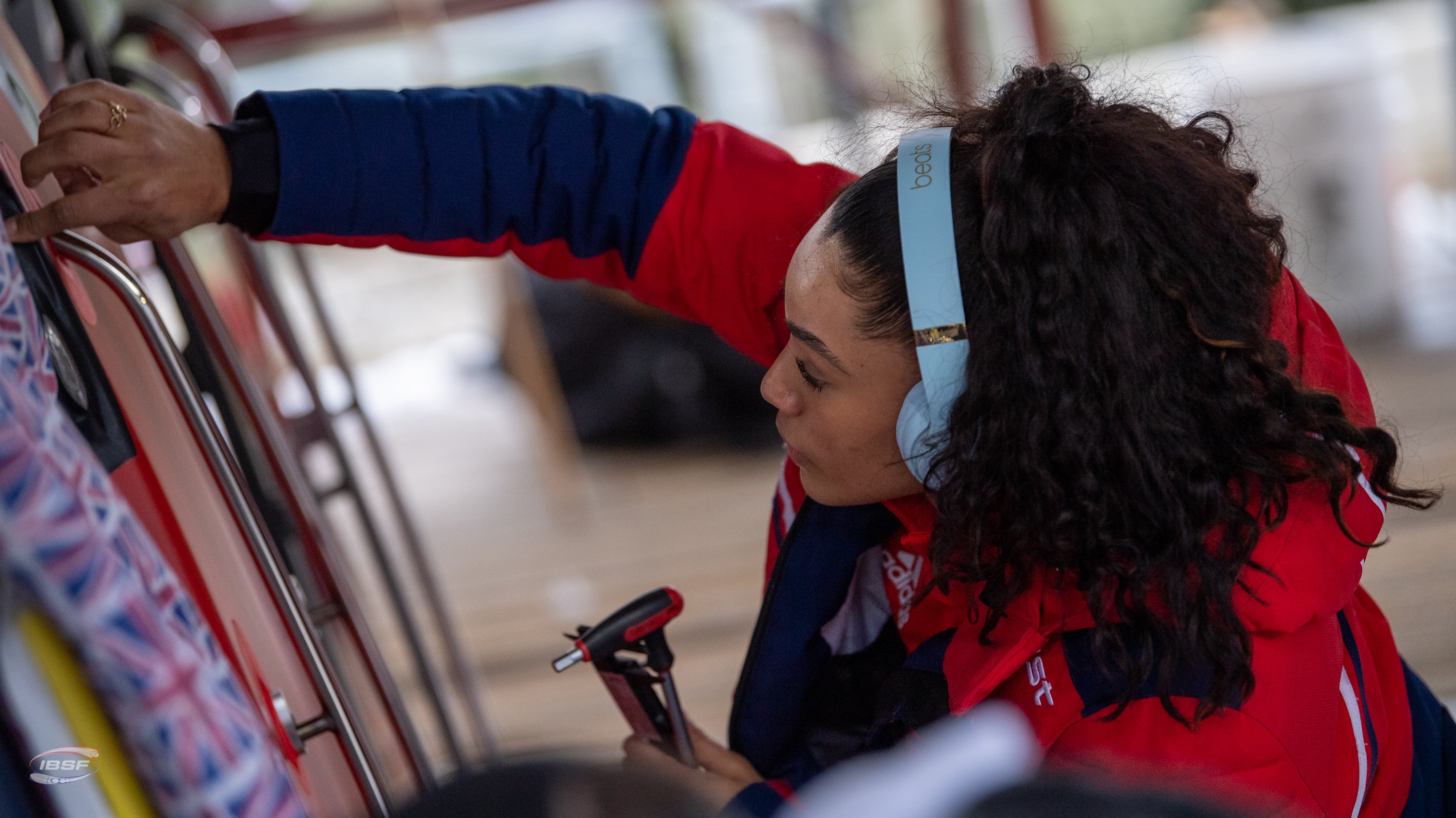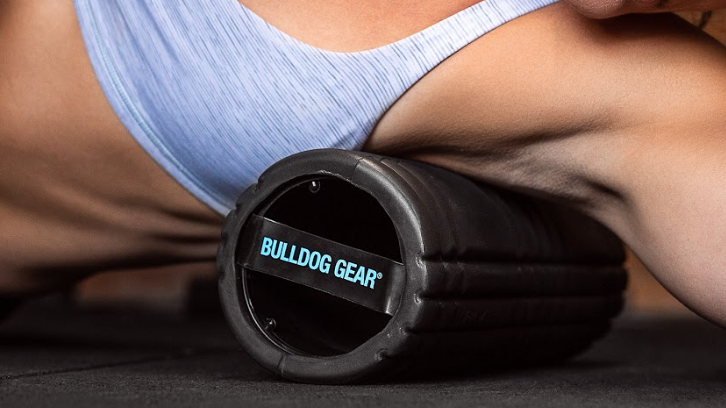|
26/01/2022 | Andrew Tracey Andrew Tracey is a long time collaborator with Bulldog Gear. A coach, writer and current fitness editor of Men’s Health Magazine, he has been in and around the fitness industry for the past 16 years. Having enjoyed and endured a number of disciplines from endurance racing, to strongman, to Crossfit AT enjoys getting neck deep in the practice just as much as the theory. |
Gymnastics rings are without a doubt one of the most portable, versatile pieces of kit you can acquire. Generations of products have appeared in their wake, attempting to improve upon the original design, but none of have come close to matching the OG for sheer, effective simplicity.
Finding somewhere to hang a set of rings can literally 10x the number of pulling movements you are able to perform, this is hugely important especially if bodyweight training makes up the mainstay of your regime. A carefully curated balance of pushing and pulling motions is not only paramount if you’re seeking to build a balanced, aesthetic physique but also crucial in staving off imbalances and injury.
Even if you’re more likely to be found training with barbells or kettlebells, moving your bodyweight through a full range of motion on the rings can be an incredibly powerful tonic for your relative strength and flexility, as well as an unparalleled diagnostic tool for your mobility; using just one or two key movements as a yardstick, you’ll easily be able to see if your progress in other areas is coming at the expense of your general ability to move your body through space.
Whether you’re already a bodyweight ninja, or a heavyweight hitter looking to incorporate calisthenics into your regime more regularly, we’ve got 10 moves for you to add to your repertoire.
Pull-ups
The king of the rings and possibly the only upper body ‘pulling’ movement you’ll ever need. Thanks to their pliability, performing your pull-ups on rings enables you to find an optimal, pain free range of motion- this is perfect for joint longevity and injury prevention. Jump up and grab a set of rings well above head height. For a full range of motion, begin with your palms facing away from one another, point your toes in front of your body and flex at the elbows, drawing your elbows down and back towards your hips, pulling yourself up towards the rings, rotating them as you go. Finish each rep with your knuckles just below your chin, before slowly lowering yourself back down to the start position.
Pike Push-up
Want bigger shoulders that aren’t just strong but more durable? Of course you do. Position yourself with your feet on top of a box, hands on a set of rings set just above the ground. Push your hips up so that they are stacked above your shoulders, elbows and wrists, in an inverted ‘L’ shape. Slowly lower your upper body until your chin passes below the rings, before pressing back up to your starting position under control. Keep your hips high and maintain core tension, throughout.
Ring Rows
More than just a stepping stone or regression on the path to pull-up mastery, the inverted ring row is muscle and strength building powerhouse in it’s own right. Hitting the often overlooked ‘horizontal pulling’ pattern, targeting the mid back and helping to build stability and balance through the shoulder girdle, this is one movement that should be included liberally in every trainees routine. Position your below a set of rings, hanging with straight arms, your back just above the ground. Create a tension throughout your entire body, squeezing your quads and glutes, fostering a solid ‘structure’ from ankles to shoulders. Flex at the elbows, drawing yourself up towards the rings, keeping your upper arms at a 45 degree angle. Hold for a breath at the top of each rep before slowly lowering yourself back down to the starting position.
To make the movement slightly easier, raise the rings and step backwards to change the angle of your body, the further away from vertical the straps are when you pull, the easier the movement will be.
L-sit
Tying in your entire trunk and engaging your hip flexors, quads and triceps, this isometric hold will challenge your entire core, throw in the instability of the rings and you have an almost unparalleled stability exercise. Position yourself with straight arms above a set of rings, contract at the abs and lift your feet from the ground with straight legs, until your legs are parallel to the ground. Actively push the rings away, squeezing the rings to maintain tension throughout your entire body and hold this position for as long as possible.
Ring Push-up
Allowing your shoulders to explore a huge range of motion, but without pressing your all important scapula muscles into a bench, ring push-ups are a panacea when it comes to building stability through your shoulder girdle, whilst also delivering a healthy dose of core strengthening goodness. Assume a strong plank position above a pair gymnastics rings. Turn your hands slightly outwards and actively push down on the rings, separating your shoulder blades. Flex at the elbows slowly lowering your chest towards the ground, keep the rings close to your body, stopping as you pass below your hands or when you feel a stretch through your chest. Press back up under control to the start position, repeat.
Muscle-up
Admit it- when you read ‘gymnastics rings’ you thought of the muscle-up, didn’t you? This show stopping, calisthenics staple is an incredible display of full body control and relative strength, and one every athlete want to have up their sleeves. Jump up and grab a set of rings well above head height. Begin with your palms facing away from one another, point your toes in front of your body and flex at the elbows, drawing your elbows down and back towards your hips, pulling yourself up towards the rings. Keep your hands close together as they reach your sternum, throw your head forward, over the top of the rings whilst ‘tracing the line of your pecs’ with your fists, finishing with your elbows above the rings. Perform a dip, pressing out to straight arms, before reversing the movement under control back to a dead hang position.
Pseudo-iron cross
The ‘iron cross’ is an advanced gymnastics movement that challenges nearly every muscle in the upper body, requiring an enormous amount of coordination and strength to control. By making a slight modification in the placement of the hands, we’re able to gain some additional leverage from the rings themselves, making this a much more accessible movement. Position yourself with straight arms above a set of rings, with your arms on the outside of the straps, so that the top end of both rings are resting on the inside of your forearms. Lift yourself from the floor, keeping your arms as straight as possible, allow your hands to move away from your body in an arc, slowly lowering your body towards the ground, once your arms are parallel to the ground, reverse the movement upwards, actively squeezing your chest at the top of each rep.
Plank
The plank is a core strengthening isometric movement, variations of which are beloved by everyone from beginners to advanced trainees. By shifting to the rings, we add an element of instability, not just through your trunk and core, but your shoulders also, helping to build a stronger, more durable body without moving a muscle. Assume a strong, straight armed plank position, gripping a set of rings hanging just above the ground. Actively push the rings away, draw your ribcage down and towards your pelvis whilst maintaining tension in your glutes and quads.
Assisted pistol
Lower body movements are often overlooked in the quest for calisthenics mastery, but rings give you the perfect tool for regressing one of the most sort after bodyweight skills in functional fitness- the pistol squat.
Hold a single ring at around head height, lift one leg from the floor and bend at one knee, maintaining an upright torso, squatting down until your hip crease passes below your knee, whilst keeping the opposite foot in the air. Use the ring to help stabilise your descent and assist you back up to standing, repeat.
Ring mountain climber
Adding even more instability into all of the muscles worked in the ring plank. The quick fire nature of the mountain climber combined with the fact the only one of your feet is ever in contact with the ground at a time coax your core and shoulders to work overtime to stop you falling flat on your face. Assume a strong, straight armed plank position, gripping a set of rings hanging just above the ground. Drive one knee up towards your chin before quickly reversing the movement and repeating with the opposite leg. Alternate back and forth between legs, quickly.



